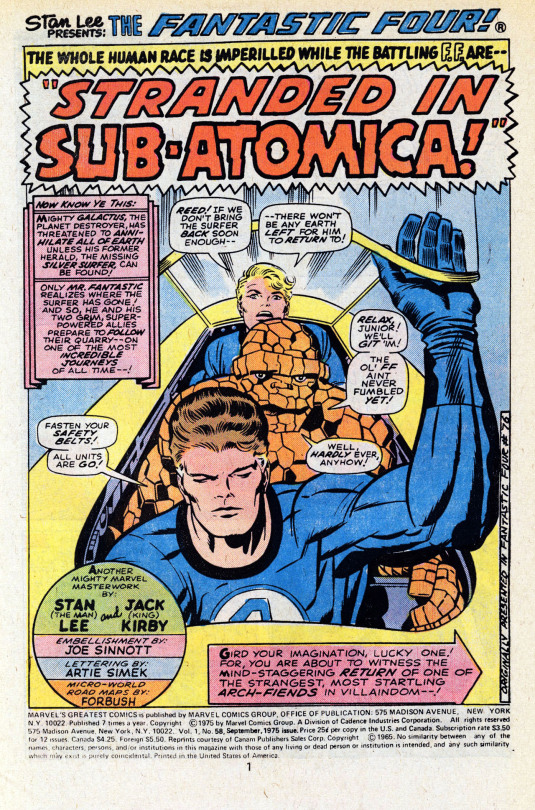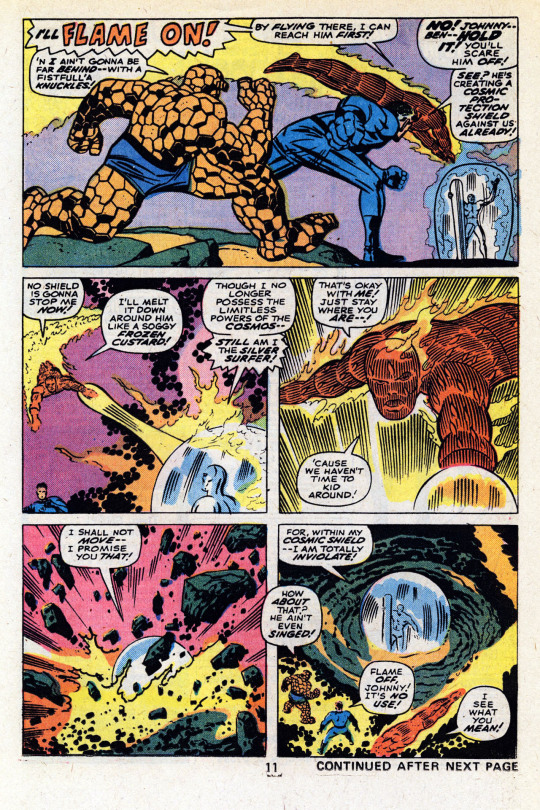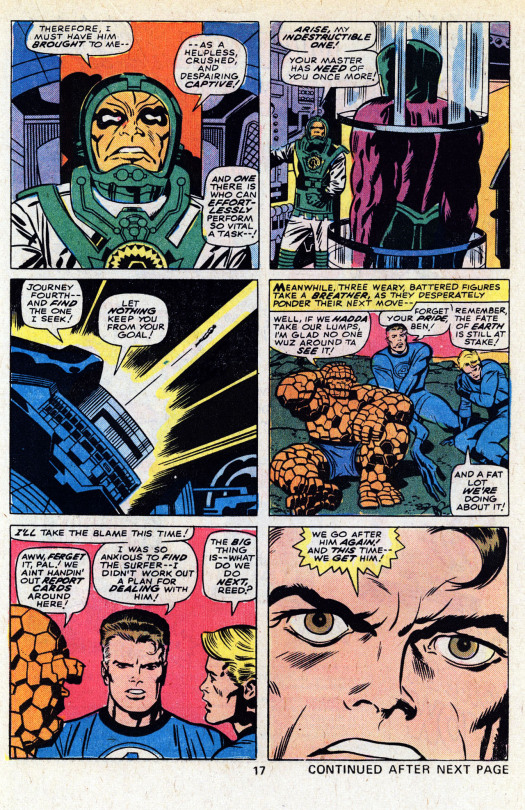
So, having read and enjoyed my first three issues of FANTASTIC FOUR, I did what any self-respecting comic book reader would do in that situation: I went back to the drug store just as soon as I could and got more. I had seen that the Fantastic Four were also featured in MARVEL’S GREATEST COMICS, and while I had no idea to start with that these were reprints of earlier stories, it wouldn’t have made any difference to me even if I did. So I did another deep dive through the huge bin and came up with three more issues, #58-60. Total cost: fifty cents.

This was a crash course in the formative storytelling of Jack Kirby and Stan Lee. By the point that these stories were produced, that creative partnership had already hit the rocks and was sliding towards its eventual disillusionment–in fact, it was an event that happened during the time of these very stories that made Kirby decide to refrain from creating new characters or concepts from Marvel any longer. But all of that was lost on me. I did notice the source listing of the story on the splash page, which I appreciated a great deal. Sometimes, the DC reprints wouldn’t cite their point of origin (and for certain periods, the Marvel ones wouldn’t do this as well.)

This issue’s cover was a new one not produced by Jack Kirby at all. The Grand Comics Database credits it to Ron Wilson and Joe Sinnott, though I don’t know that I concur on the inker–it doesn’t appear to have the surety of Joe’s work. It’s not a terribly strong piece regardless–the Murder Machine is stiff and awkward, in particular his right arm. But I wasn’t really being picky at this stage–I was just looking to experience a bit more of what the Fantastic Four had to offer. I also didn’t learn for some time that because these stories had been produced when 20 pages was the regular length, two pages had been cut out of these stories during this era of 18 page Marvel tales. I would have been aghast at that notion.In this instance, it’s a subplot page focusing on Crystal and the pregnant Sue Richards that get the axe, though a caption on the subsequent page that referred to it still remained, and baffled me somewhat.

I had encountered the work of Jack Kirby a number of times before this, almost always in passing. He was a ubiquitous figure at DC in the 1970s, his covers always striking and memorable even when I didn’t care about the subject matter of the stories. But as compared with the sort of clean and pristine DC artwork that I most liked, as represented by artists such as Irv Novick or Dick Dillin, Kirby’s work felt harsher and rougher and more uninviting. As with so many fans of the era, while I eventually came to embrace Kirby’s immense talent and imagination as the foremost architect of the Marvel Universe, as a kid I found his work off-putting and a bit out-of-step with what was then considered contemporary artwork.

As with many of the Marvel books of the 1960s, the plot of this story was relatively thing, all the better to allow for plenty of all-out action and an opportunity for the characters to bounce off of one another. Galactus has returned to Earth and needs the services of the Silver Surfer. He demands that the Surfer be returned to him or else he’ll have no choice but to eat the Earth. The Surfer, though, has come upon Reed’s notes on entering the sub-atomic universe that Psycho-Man had come from. So Reed, Ben and Johnny (without the pregnant Sue) must pursue the Silver Surfer into Sub-Atomica and convince him to come back with them, before the world is destroyed.

But the Surfer, he doesn’t want to go back, and the FF spend so much time fighting with him that they forget to mention that little matter of Galactus wiping everything out if the Surfer doesn’t comply. To make matters worse, Psycho-Man has detected their entrance into his realm, and he unleashes a super-powerful android (something of a staple of the FF yarns of this period) to overcome and destroy them. Meanwhile, Galactus is getting hungrier, and so he’s beginning to power up his cosmic converter. It’s all handled in that operatic style that Stan Lee absolutely perfected, and served up with a dollop of humor, mainly in the form of the assorted wry quips and one-liners that the Thing would make all throughout the adventure.

As the seconds tick away, and Ben, Johnny and Reed aren’t able to stop Psycho-Man’s rampaging monster, Reed decides to sacrifice himself in order to hold it back long enough for the other two to get away–locating the Surfer and convincing him to go back is of paramount importance. Fortunately for the heroic father-to-be, the Surfer has been secretly watching them this whole time. He dispatches the android practically without lifting a finger. Ashamed of his selfishness, the Surfer takes to the skies, to return to the full-sized universe and save the world from Galactus’ wrath. But the FF don’t follow him–they know that there’s nothing more they can do in that conflict, and while they’re here, they might as well go and pulverize Psycho-Man for his attacks on them and their civilization. S that’s what they set out to do as the issue ends–and I have to say, I loved the somewhat-mysterious Next Issue blurbs that Stan would close out an adventure on. I was able to motor directly into the subsequent story–but you all will need to wait a week or so until the next installment.
